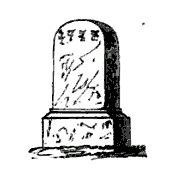52°56′N 139°46′E / 52.94°N 139.76°E

The Yongning Temple Stele (Chinese: 永寧寺碑) is a stele erected by the Chinese Ming dynasty in 1413 with a trilingual inscription to commemorate the founding of the Yongning Temple (永寧寺) in the Nurgan outpost, near the mouth of the Amur River, by the eunuch Yishiha. The location of the temple is the village of Tyr near Nikolayevsk-on-Amur in Russia. This stele is renowned both as the latest known example of a monumental inscription in the Jurchen script, and also for the inscription of the Buddhist mantra Om mani padme hum in four different scripts on its sides. A stele with a monolingual Chinese inscription, commemorating the repair of the temple by Yishiha, was erected in 1433. Both monuments are now held at the Arsenyev Museum in Vladivostok.